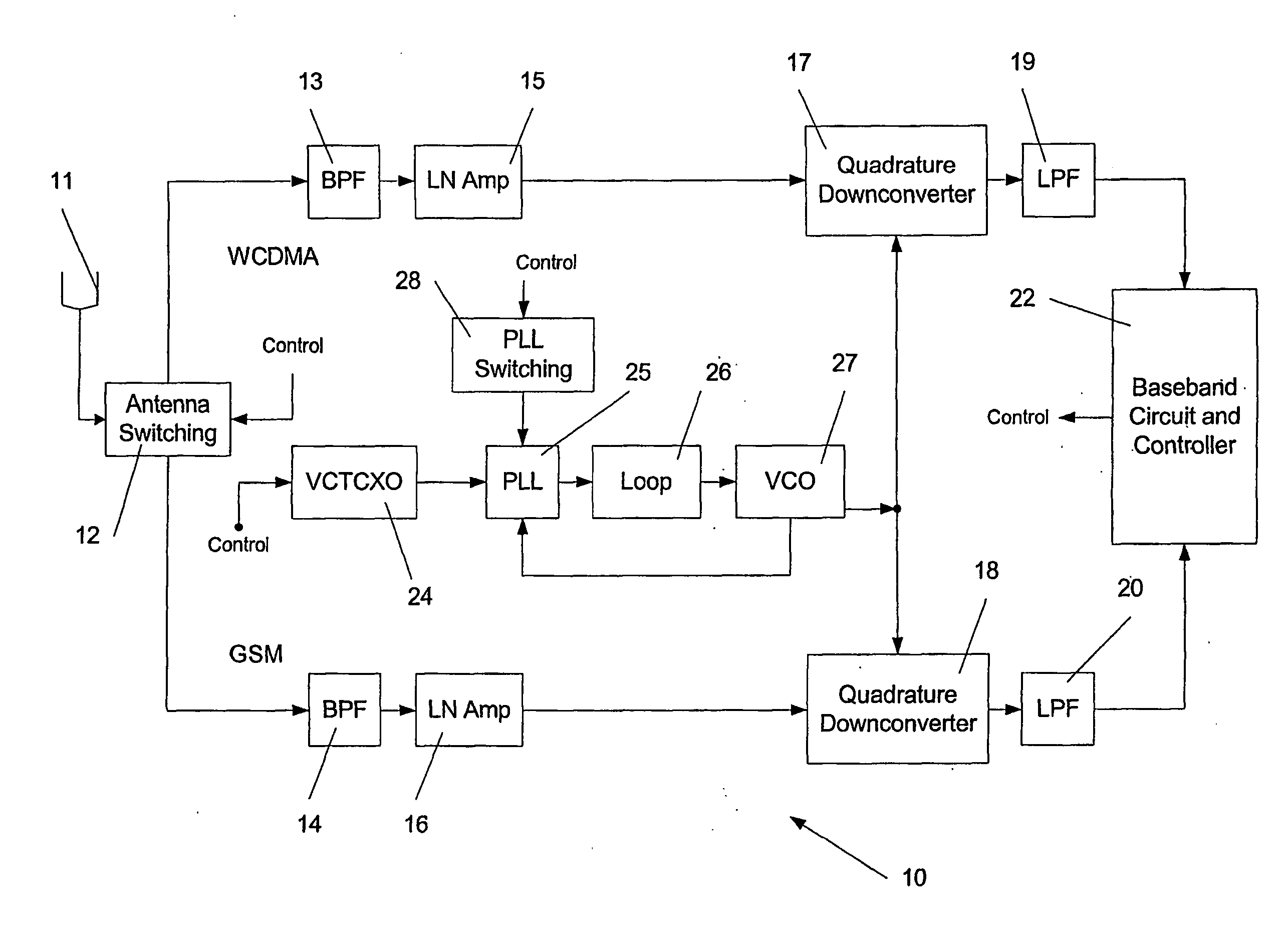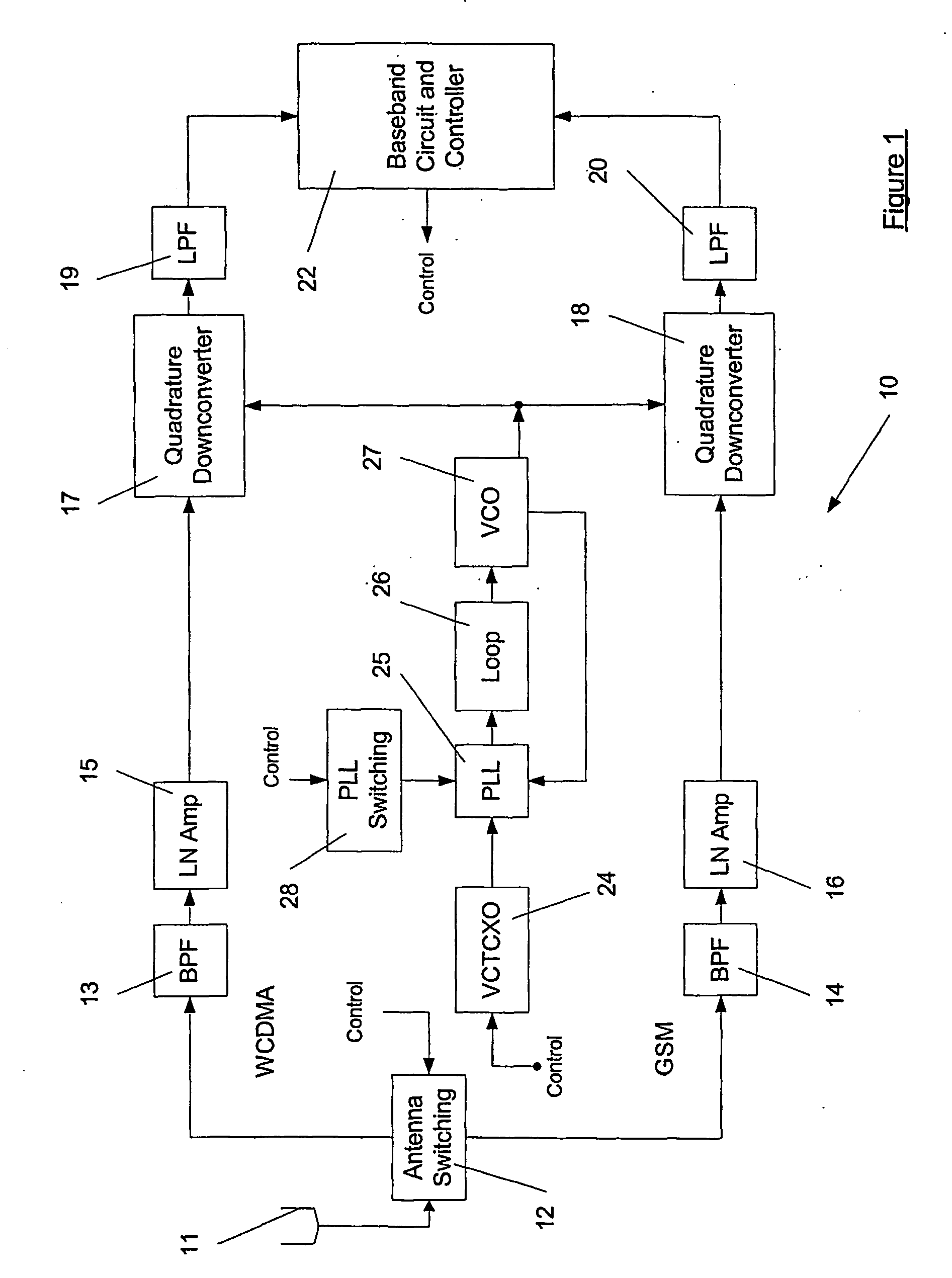Method and apparatus for reducing frequency errors associated with an inter-system scan
a technology of inter-system scan and frequency error, which is applied in the direction of polarisation/directional diversity, wireless communication, and assessment restriction, etc., can solve the problems of adding additional cost and complexity to the circuit, wcdma system and gsm system synchronization is not common, and the overhead of circuit complexity is small, memory space and energy consumption is reduced, and errors already have been substantially reduced
- Summary
- Abstract
- Description
- Claims
- Application Information
AI Technical Summary
Benefits of technology
Problems solved by technology
Method used
Image
Examples
Embodiment Construction
[0036]FIG. 1 is a schematic circuit diagram representing a dual mode receiver 10 for a mobile unit. For the purpose of explanation the dual mode receiver 10 is illustrated as being capable of receiving either WCDMA or GSM signals. It will be appreciated that other combinations of receivable signals are possible. Signals received at an antenna 11 are switched by a switching component 12 to either a WCDMA receiver chain (shown in the upper part of FIG. 1) or a GSM receiver chain (shown in the lower part of FIG. 1). Both receiver chains operate in essentially the same way insofar as the received signal is: filtered by a bandpass filter (BPF) 13,14; amplified by a low noise amplifier 15,16; down-converted to a baseband frequency by a down-converter 17,18; and filtered by a lowpass filter 19,20 before being input to a baseband circuit and controller 22 for further processing.
[0037] The receiver 10 also comprises a voltage controlled temperature compensated crystal oscillator (VCTCXO) 24...
PUM
 Login to View More
Login to View More Abstract
Description
Claims
Application Information
 Login to View More
Login to View More - R&D
- Intellectual Property
- Life Sciences
- Materials
- Tech Scout
- Unparalleled Data Quality
- Higher Quality Content
- 60% Fewer Hallucinations
Browse by: Latest US Patents, China's latest patents, Technical Efficacy Thesaurus, Application Domain, Technology Topic, Popular Technical Reports.
© 2025 PatSnap. All rights reserved.Legal|Privacy policy|Modern Slavery Act Transparency Statement|Sitemap|About US| Contact US: help@patsnap.com



